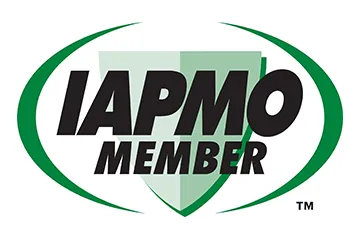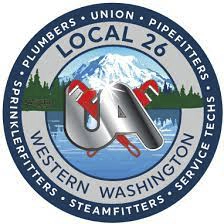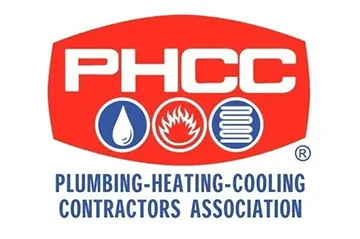As soon as you become a homeowner, your vocabulary starts to expand in ways you never imagined. Suddenly, you’re throwing around terms like “GFCI outlets,” “roof flashing,” and “P-traps” like a seasoned contractor just because it’s become a necessity to understand your home’s inner workings. Despite all this newfound knowledge, some concepts can remain a little confusing. One prime example? The difference between a main sewer line and drain lines. If you’ve ever heard these terms used interchangeably, you might not even realize this is incorrect!
Are you wondering what exactly a main sewer line is or what to do if there’s an issue? You’re in the right place! At Skagit Plumbing, we’ve spent years helping homeowners navigate everything from minor sewer repairs to full sewer replacements, and we’re ready to share our knowledge with you. In this way, you can better maintain your home and enjoy every year you spend in its comfort.
So, What Exactly Is a Main Sewer Line?
Your main sewer line is the “highway” for all the wastewater in your house. Every sink, shower, toilet, and appliance that drains water connects to smaller pipes called drain lines, which then funnel into the main sewer line. This main line is then responsible for transporting all that waste and water away from your home and into the municipal sewer system or your septic tank.
The pipe runs underground, typically beneath your yard, and is built to withstand years of wear and tear. However, because it serves as the central hub for all your wastewater, even a small issue can become a big problem if left unaddressed. That’s why routine sewer line services, including inspections and maintenance, are crucial.
How Is a Main Sewer Line Different From Drain Lines?
The easiest way to think about the difference between a main sewer line and drain lines is to compare them to a tree. The drain lines are like the branches, collecting wastewater from individual fixtures like your kitchen sink or bathtub. The main sewer line is the trunk, gathering everything from the branches and carrying it out to the street or your septic system.
Here’s a closer look at the key differences between the main sewer line and drain lines:
- Size: Main sewer lines are larger in diameter than individual drain lines because they handle a higher volume of water and waste.
- Purpose: Drain lines are localized, serving a single fixture or a small group of fixtures. The main sewer line connects your entire home’s plumbing system to the larger sewer system or septic tank.
- Location: Drain lines run inside your home, while the main sewer line is typically located underground outside your home.
Understanding the difference between your main sewer line and drain lines can help you better identify where plumbing issues originate and whether you need a sewage system repair or a simple fix for a clogged drain.
How Do You Know if Your Main Line Is Clogged?
A main sewer line clog can cause serious headaches for homeowners. The tricky part is that symptoms of a clog often mimic those of smaller plumbing issues. So, how can you tell if the problem lies in your main sewer line rather than a single drain? Look for these telltale signs:
- Multiple Clogged Drains: If more than one drain in your home is backing up simultaneously, there’s likely an issue with the main sewer pipe.
- Gurgling Sounds: Strange gurgling noises from your toilet or sink are often caused by air trapped in the pipes due to a clog in the main drain line.
- Sewage Backups: One of the most alarming signs of a clogged sewer line is sewage backing up into your home, especially in low-lying fixtures like basement drains or showers.
- Slow Drainage: If every drain in your house is running slow, it’s time to check the main sewer line.
- Bad Odors: A lingering smell of sewage inside or around your home can indicate a problem with your main sewer line.
Who to Call for Main Sewer Line Issues
Dealing with a main sewer line problem isn’t something you can tackle with a plunger and some elbow grease. Issues like clogs, cracks, or tree root intrusion require specialized tools and expertise. That’s when it pays to have a professional plumber on speed dial.
Whether you need a minor repair, a thorough inspection, or a full replacement, a highly trained team like Skagit Plumbing has the skills and equipment to get the job done right. We can quickly diagnose the issue, provide transparent solutions, and restore your home’s plumbing system to full functionality.
Problems With Your Home’s Main Sewer Line? Call the Skagit Plumbing Team
Your main sewer line is built to endure a lot, but over time, exposure to the elements, tree root intrusion, shifting soil, and other factors can take a toll. That’s why regular maintenance and prompt repairs are essential. With the right care, your main sewer line can continue doing its job for decades.
If you’re experiencing issues or simply want to schedule an inspection, contact Skagit Plumbing today. We’re here to help with all your sewer line needs, from minor repairs to complete replacements, so you can enjoy peace of mind knowing your home is in good hands.
Frequently Asked Questions About Main Sewer Lines
Don’t leave just yet! We have even more information on some of the top questions homeowners have about main lines in their yards.
Does every house have a main sewer line?
Yes, every home has a main sewer line that connects its plumbing system to either a city sewer system or a septic tank. Without it, wastewater wouldn’t have a way to leave your home.
How do I know where my main sewer line is?
Your main sewer line typically runs underground, starting where your home’s drain lines converge (often in the basement or crawl space) and extending out to the street or septic tank. A plumbing professional can help locate it if needed. You can also look for the sewer line cleanout (a four-inch pipe with a screw cap on top that sticks up from the ground or the floor of your basement, crawl space, or garage) to locate the main line.
Who is responsible for the main sewer line?
Homeowners are generally responsible for the portion of the main sewer line that runs from their house to the property line or street. Beyond that point, it’s typically the municipality’s responsibility. However, this can vary by location, so check with your local government or utility company.
What causes main sewer line clogs?
Common causes include tree root intrusion, grease buildup, flushing inappropriate items, and debris accumulation over time. Scheduling routine sewer line inspections can help prevent these issues.
How can I avoid sewer line problems?
Regular maintenance, mindful flushing habits, and avoiding pouring grease down your drains are some of the best ways to keep your main sewer line in good shape.




